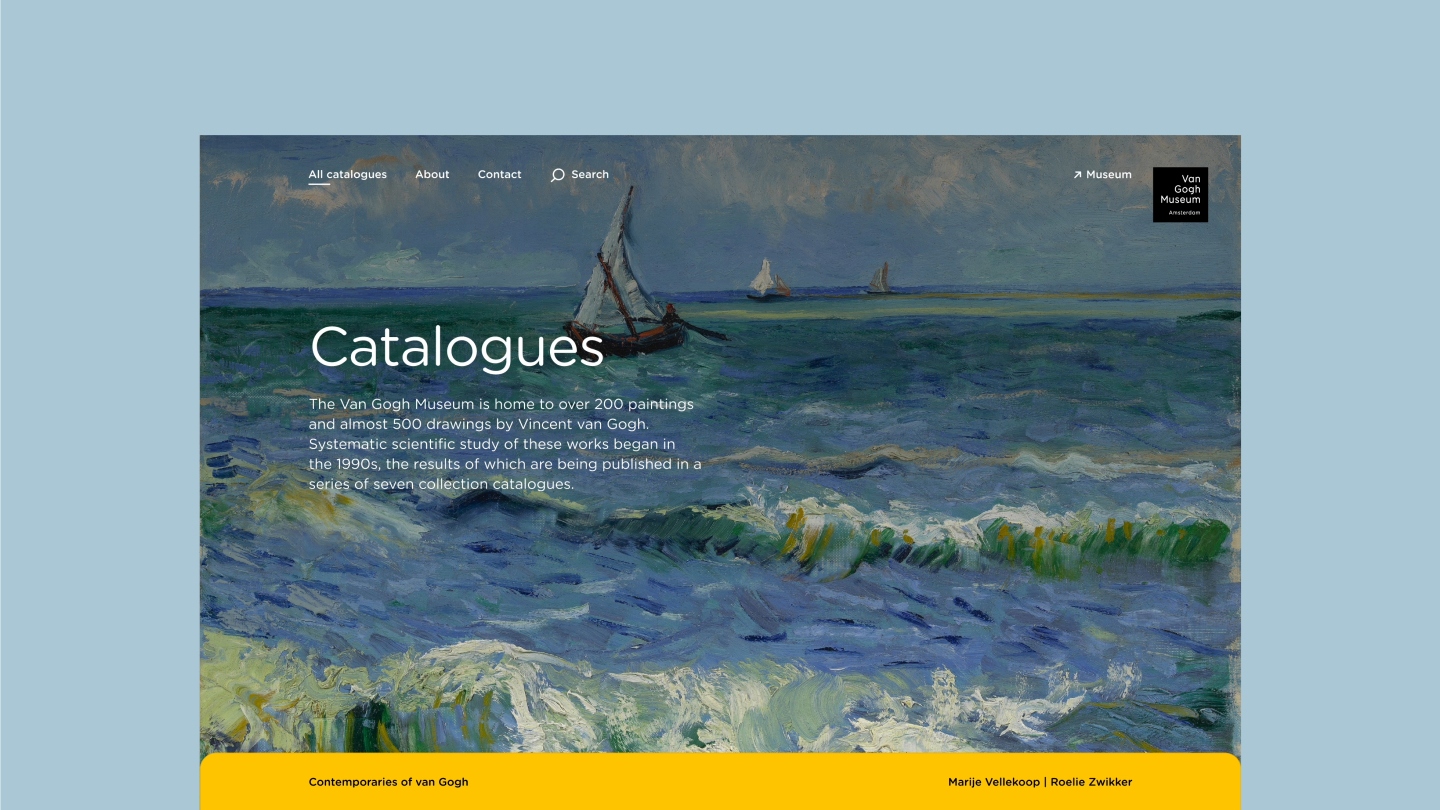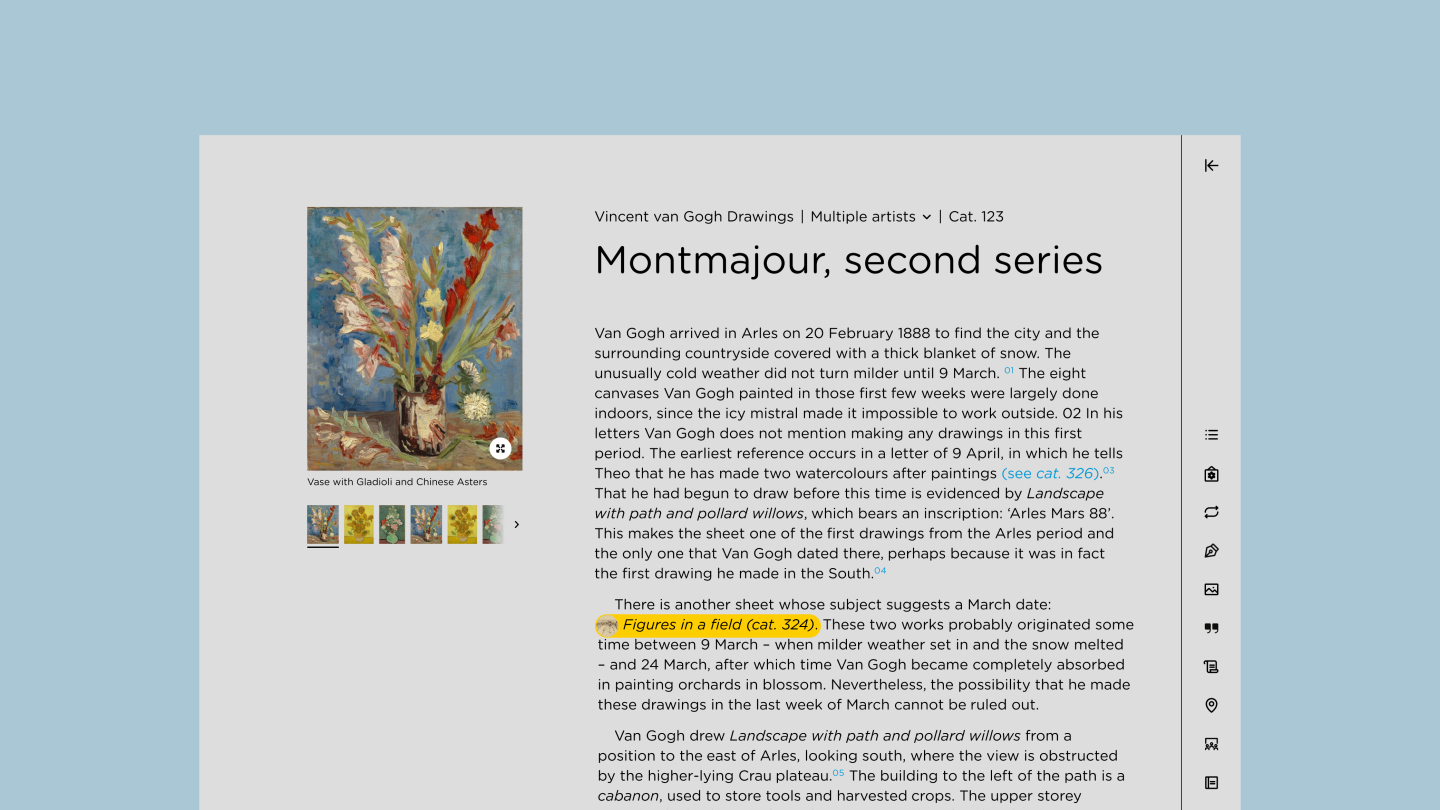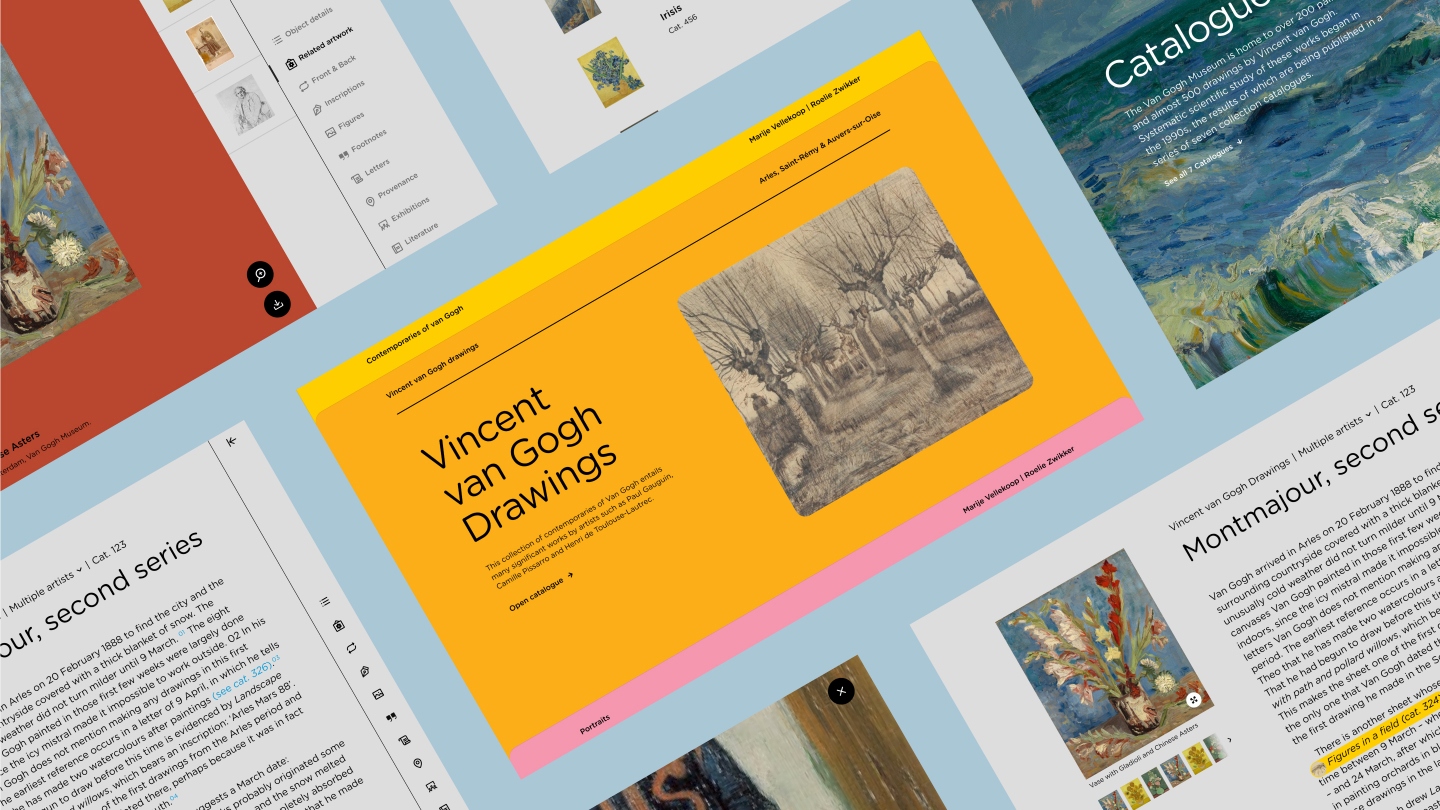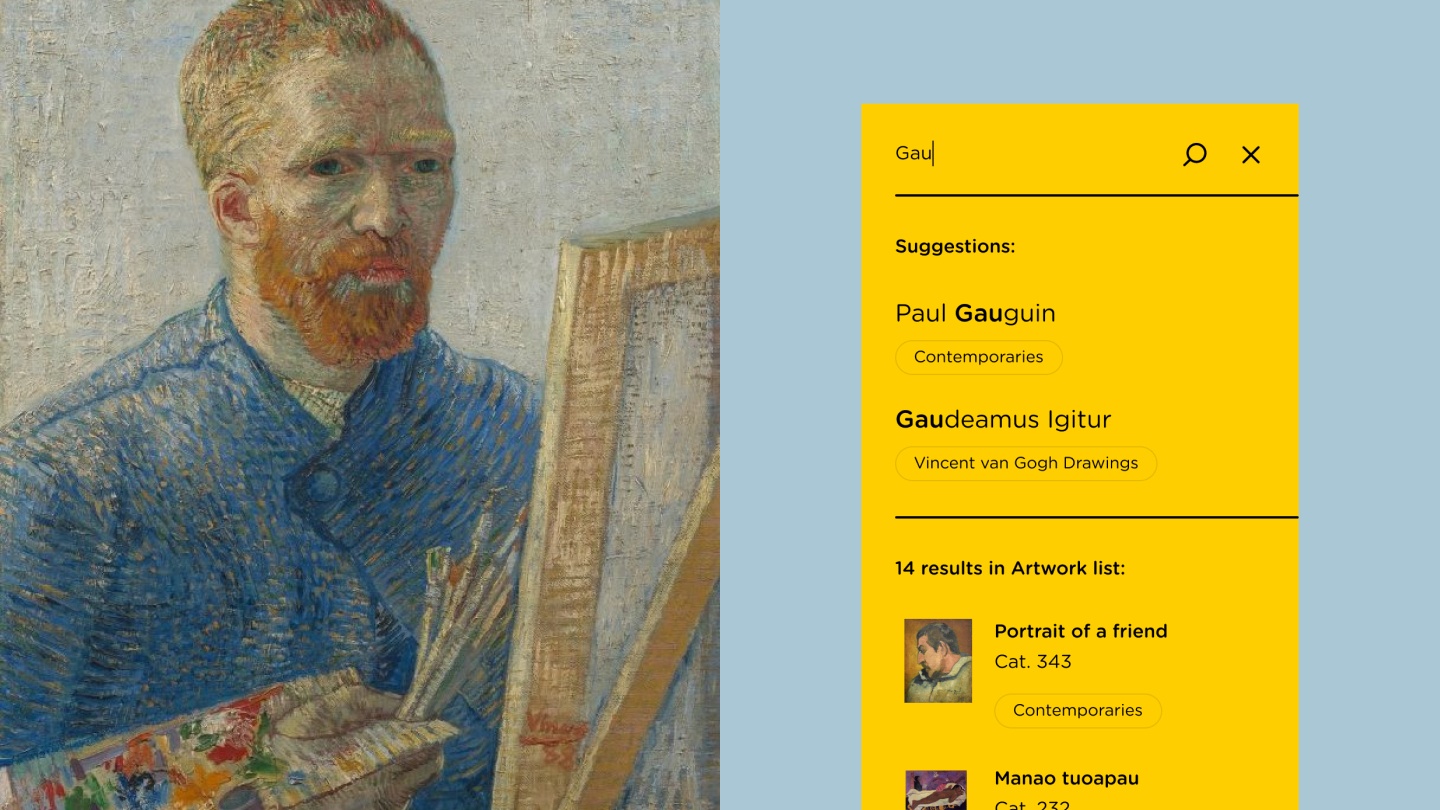Vincent van Gogh is a true luminary of Dutch artistry. And when it comes to showcasing why he is one of the Dutch masters of painting, no museum surpasses the Van Gogh Museum in Amsterdam. Whether in its spectacular halls, in the digital realm or in its collection catalogues, they proudly display an awe-inspiring collection of Van Gogh’s works.
We created The Van Gogh Collection Catalogue to become an unprecedented digital experience for researchers and art lovers. Years of meticulous research on 200 paintings and nearly 500 drawings by Vincent van Gogh resulted in a series of seven collection catalogues, with six published and the final one in the making. Together with the Van Gogh Museum and Q42, DEPT® undertook the project to digitise these catalogues, aiming to overcome the limitations of traditional books and provide researchers with a more immersive digital experience.
Setting a new industry standard
The Van Gogh Museum sought to establish a new industry standard, pushing the boundaries of art engagement in the realm of art historian research through digital innovation. By embracing the potential of digital technology, the museum aimed to revolutionise how art historians and researchers explore and engage with artworks, setting a precedent for the field and inspiring new approaches to digital catalogues. The two main focus points?
01 Structure
Preserving the logical structure of the physical books was crucial during the digitization process. It was essential to ensure a seamless transition to the digital format while maintaining the inherent flow and organisation of the original publications.
02 Scalability
Scalability was another important aspect of the project. The museum required a platform to accommodate various catalogues, from just one to as many as 10. This flexibility empowered the Van Gogh Museum to translate every detail, ensuring the preservation of the researchers’ work as intended.

Embracing the best of both worlds
We created a website that embraces the best of both worlds; synergizing the richness of a printed catalogue with the immersive potential and interactivity of a digital experience. Drawing inspiration from the concept of a well-organised physical desk with drawers, we incorporated design elements on our homepage that mimic an analogue folder structure found in such a drawer. For instance, we implemented tabs that resemble the compartments of a drawer, enabling users to easily navigate and obtain a clear overview of the collections available.
We also implemented intuitive features like:
- a reader mode with a side drawer, which conveniently stores supplementary details such as related artworks, front-back views, and zoom options
- a sticky image that remains fixed for effortless engagement;
- tooltips for footnotes and supportive images eliminate page clutter, providing readers with a clean experience;
- a clever search feature allowing users to search entries across multiple catalogues simultaneously;
- the integration of Micrio (the gigapixel technology created by Q42) to further enhance the digital experience, offering a more captivating and immersive encounter with the artwork than ever before.

Elevating the experience through extensive testing
We conducted thorough research, interviewing researchers and art historians to understand the nuances of collection catalogues and how users interact with them. Meanwhile, we prioritised alignment with the client’s vision and needs throughout the entire process. When the product reached a sufficient stage of readiness, we created a prototype for user testing.
Rigorous testing with our target audience…
… refined the design to exceed their expectations
… allowed us to enhance the overall experience
… brought to light unforeseen challenges we addressed with care
Last but not least, it revealed the joy and appreciation our target audience experienced, highlighting the value of the enhanced features made possible by this digital transformation.

Small audience, big impact
Through this project, we have ensured that everyone, particularly researchers, can now enjoy the convenience of accessing all catalogues simultaneously, anytime, without having to carry heavy, printed materials.
However, the impact of this project reaches beyond mere convenience. While immersive projects of this nature are commonly created for a broader audience, we made a deliberate choice to design an immersive experience tailored for an important but much smaller target audience. By doing so, we have not only enhanced their productivity and efficiency but also enriched and reshaped the overall experience and the way they engage with the collection catalogues. The Van Gogh Collection Catalogues pave the way in enabling art institutions to make their artworks more accessible to researchers.
Because this project has recently been launched, we are currently in the early stages, and therefore, data still needs to become available to measure its impact. Nonetheless, we conducted user tests during the development phase, and the results were promising, with an average score of 90 out of 100.

It [the Van Gogh File Catalogue] is incredibly rich in connections and navigation is very user-friendly. Personally, I find it exceptionally clear how to maximize the use of the catalogue. I think it’s amazing that accessing source material is so effortless; the design is highly intuitive. Overall, it’s a thoroughly enjoyable website to use.
one of the art researchers who was a subject in the user test
